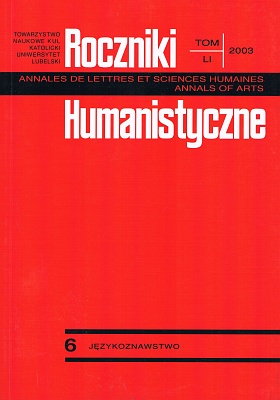The Lexis Connected with Animals in Rev. Jan Twardowski’s Poetry
Abstract
The subject of the present article is an analysis of the lexis connected with animals in Rev. Jan Twardowski’s poetry. The analysis was made on the basis of the volume Nie przyszedłem pana nawracać. Wiersze 1945-1985 (ed. 11, Warszawa 1998).
The problems comprised here is basically concentrated around three problems, that is, presenting names of animals, characterisation of the animals, and their function in Twardowski’s poetical world.
- Presenting names of animals. The poet introduced 150 lexemes naming animals into the poems in the discussed collection. Only 7 of them are hypernyms and the rest are words with individual meanings. They may be classified in a way similar to the one used in zoology: birds, mammals, insects, fish, amphibians and reptiles. The most numerous and the most varied class of words are birds’ names. The other animal classes have a smaller number of representatives in the texts and their presence is usually limited to only the best known individuals.
- Characterisation of the animals. Thanks to the lyrical ego’s penetrating look with which he views the surrounding nature, we not only learn about significant features of the animals’ outer form, like colour, plumage, or other details of their anatomy, but also about their psychological traits, the kind of behaviour, biological needs and the surrounding in which they live. To this end Twardowski uses various means of expression, but decidedly most often he reaches for comparisons. He also readily refers to linguistic stereotypes of animals and refreshes them in an original way.
- Functions of animals. In Rev. Twardowski’s poetry nature, including the world of animals analysed here, fulfil at least five functions: presenting natural history, catechetic, poetical, symbolic and humorous ones, that permeate and complement each other. Discussing them in detail could be a separate research problem and this is why they have been only mentioned and superficially discussed here.
Copyright (c) 2003 Roczniki Humanistyczne

This work is licensed under a Creative Commons Attribution-NonCommercial-NoDerivatives 4.0 International License.





